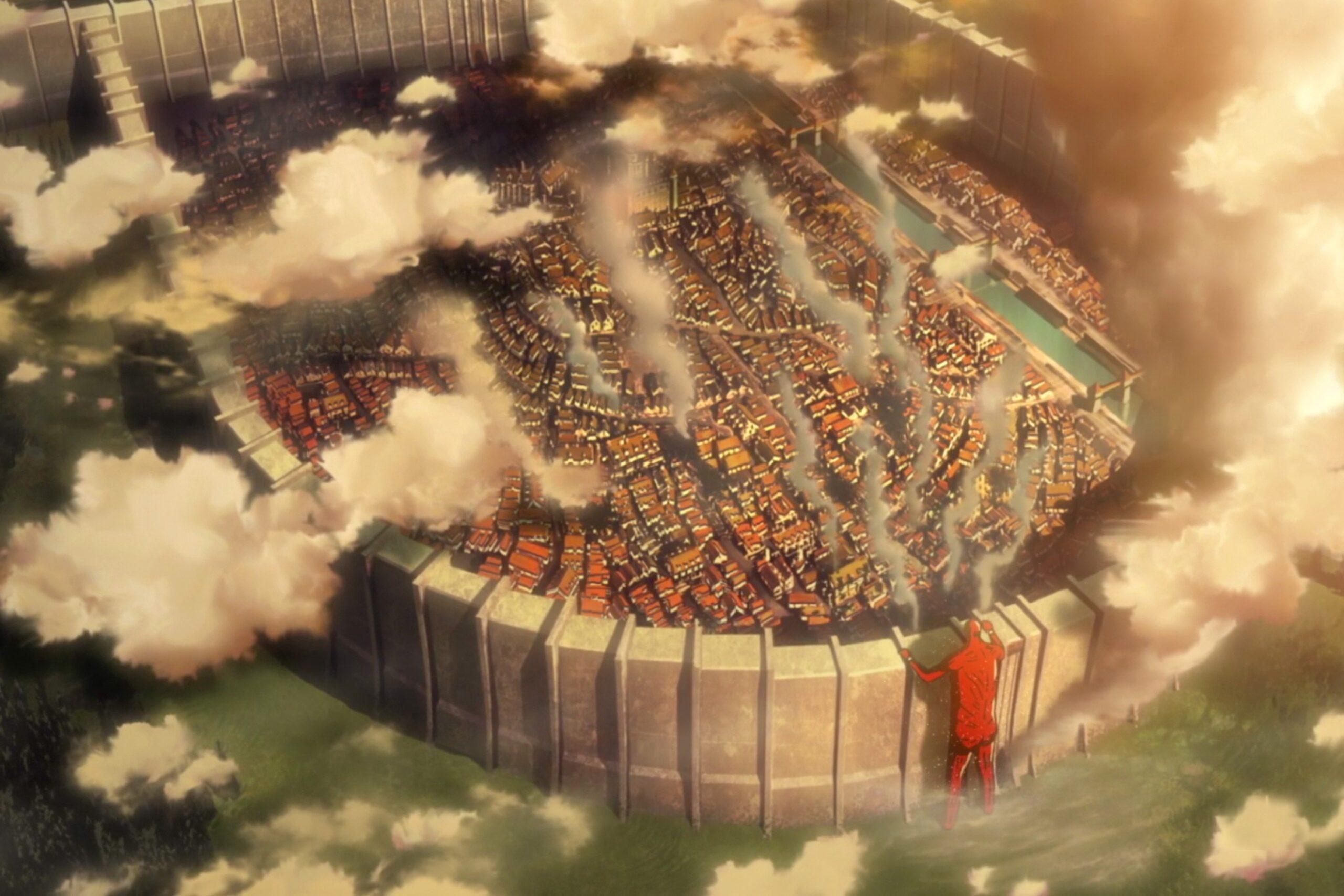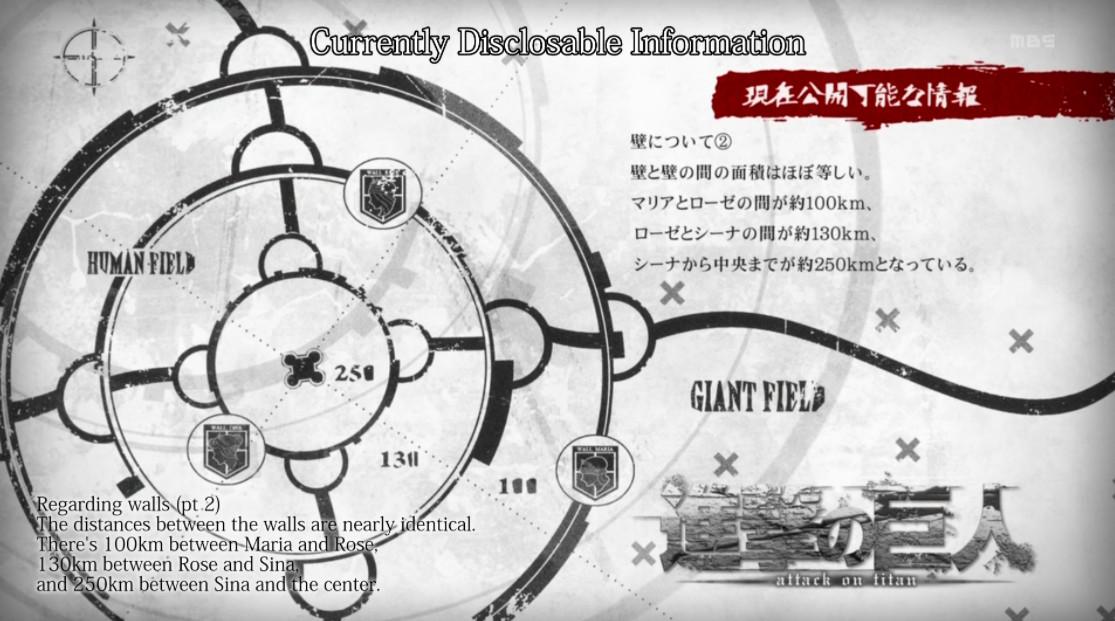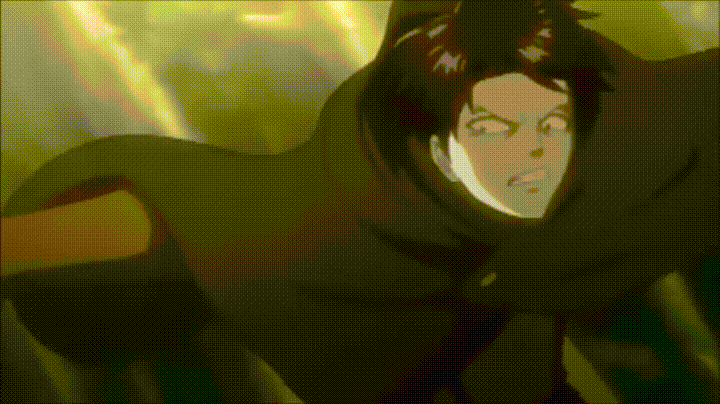
After nearly 15 years on air, Naruto aired its final episode March 23. My older brother, with whom I spent countless hours watching the show, needed something else to kill time with. And so I spake thusly: “Attack on Titan. It’s flames.”
Based on a Japanese manga of the same name, Adult Swim’s Attack on Titan is an animated action series, by which I mean it’s a cartoon. But it’s a cartoon with adult ambitions that is decidedly not fun for the whole family. Instead, Titan is a complex saga about practical fatalism and fear-of-the-unknown as contagion. Additionally, and more interestingly, it’s about exactly how much intentions matter even and especially when results don’t bear them out. This means that it’s also talky, gory, and at times deeply saddening, but it’s one of the best things on (internet) TV, and I stand by my strong feeling that you — also, as well — should watch it.
Until it was explained to me as such by registered good-opinions-about-anime haver Justin Charity, I wasn’t aware that Naruto was considered lowbrow. Then again, I was also unaware that the anime industry’s bubble burst was part of the reason it was difficult to find a new consensus-great action series. Simply put, to create a Fullmetal Alchemist requires money, man hours, and studio space — like, a lot of all those things. There was a boom in the mid-2000s, in which Japanese studios churned out title upon title, each vastly expensive to produce and market. When a lot of those big, event-action series bricked, the money for them dried up. In their place we got a surfeit of highly caricatured and patently less-tight moe anime, which was much cheaper to produce and likely what you’d point to if you wanted to make fun of the medium. In 2013, when Attack on Titan first aired, it felt to me like the show that would fill the yawning action-cartoon void, for any of a number of reasons. It seems morbid to call it the last great action series, but, then again, it’s a morbid show. And after one stellar breakout season, an extended hiatus made it seem as though we might never get it back.
But on April 1, more than three years after the Season 1 finale, Titan returned with its Season 2 premiere. Which, obviously, is not where you should start if you’re unfamiliar. Let’s begin instead with the world the show exists in, shall we?

Trafficking mainly in magic realism, Titan presents a setting in which humanity has been busted down to its last legs by titans, which look like humans, but are so not humans. They’re much larger and more terrifying, and can grow everything — including their heads — back if lost. The only other thing known about them from the show’s onset is that they seem fond of eating people by the village-full, though not exactly out of hunger, kind of like how you or I might mindlessly polish off a family-size bag of chips. To give themselves a fighting chance against these monsters, humans invented devices that basically make soldiers like … imagine if Robin were even more acrobatic, and could fire his grappling hooks from the hip, therefore having both hands free to wield swords. Yeah, that.
But back to world-building. What remains of mankind shelters itself from the world outside behind three walls, effectively trading freedom for security. The names of these walls aren’t all that important (for context’s sake and in order from inside out: Wall Sina, Wall Rose, Wall Maria), but their positioning does neatly create social strata. The innermost wall protects the king, while those who live along the outermost wall are generally poorest. This makes for some cynical politics, but with literally all of human life at stake, even the most despicable choices — like lessening the effects of famine by sending hundreds of thousands of untrained civilians out to “reclaim” Wall Maria after it falls in the first arc (yep) — seem necessary to survival. You’ll never mistake survival for “winning,” and, further still, your understanding of what “winning” is will be challenged. It’s murky stuff.
Titan follows a young man named Eren Yeager who, after seeing the carnage that obliterated a fallacious 100-year peace within the walls, resolves to join the military to drive the titans out. The main leads are Eren, Armin Arlert, and Mikasa Ackerman, childhood friends, all of whom enlist. While Eren’s apparent skill is his drive — he’s sort of meh at everything else — and Armin’s is his gift for strategy, Mikasa has complete control over both her emotions and her body, making her like an entire brigade unto herself, and far and away the most gangster.
In the first season these characters — along with a few others from the 104th Cadet Corps — are developed by way of flashback, outburst, and the occasional, wide-eyed, telling gawk at an outburst. Even the fringe characters are given some depth as each has to, at some point, choose between self-preservation and facing the sum of their greatest fears. As they struggle, it becomes clear that pressure doesn’t always make diamonds; it just reveals whatever’s inside.
Soon you’ll also understand that no one — not even “elite” warriors, so especially not your favorite character — is safe. To go with immeasurable heart you need skill, the show contends, and even then you still need luck. In one scene, Captain Levi, who is widely accepted to be “humanity’s strongest soldier” and very much not to be fucked with, rolls his ankle, and suddenly it feels like a life-or-death situation.

That’s the important part. Each character, no matter when they arrived or how long they’ve been around, is given their own something; a quirk, a painfully short romance, a backstory, a piece of town gossip, a résumé, whatever. This makes it difficult to know whose number will be next up, and when it inevitably is, you feel each loss.
It’s not all brilliant, though. Similar to plenty of other shows in the medium, Titan suffers from pacing issues. Frequently, in heady moments, either a flashback or a lengthy internal monologue intrudes upon the action. Conversations that shark up three full minutes of runtime are supposed to happen within narrative seconds. While Titan does have some tantalizing mysteries just out of arm’s reach that keep you coming back each week, some you can figure out pretty easily, sometimes two or three episodes before the actual characters do. When you have your newly converted brother who also watches the show to lord your discoveries over, this is good. Not so much when it’s just you, in your apartment, screaming at Hulu. To that end, those pacing issues will be less noticeable binging the first season, which is also available on Crunchyroll (along with a few Season 2 episodes). But they’ll stand out again as you go through the second season, of which there are currently four episodes of an ordered 12 available.
Minor issues aside, it’s absolutely worth it to go along for the ride. It’s a disgusting, cruel, beautiful, and occasionally funny world waiting to be explored — every bit the great cartoon action series we’ve been waiting for since the mid-aughts. The question, Titan asks, is what are you so afraid of?
An earlier version of this story misstated the number of episodes planned for Attack on Titan’s second season. Twelve, not 25, were ordered.